Sunday, August 26, 2007
DEFENSE & FOREIGN AFFAIRS SPECIAL ANALYSIS August 24
Major Changes Anticipated in Iraq, Begging Question of How Iran and Syria Will Respond
Analysis. From GIS Station Baghdad.
The Iraqi Government of Prime Minister Nouri al-Maliki seems less than likely to survive through September 2007. The US Bush Administration appears to have now openly given its blessing to the removal, by one means or another of the now almost-totally pro-Tehran Maliki Administration.
GIS/Defense & Foreign Affairs reported on July 31, 2007, that a military coup by the independent (ie: not Maliki-controlled) Iraqi Special Forces was possible in September 2007. But other “mechanisms” are also known to be under consideration by Iraqi nationalists.
What is more, Prime Minister Maliki is aware of the threat, and is maneuvering — in close coordination with Tehran and Damascus — to stave off the threats.
See Defense & Foreign Affairs Special Analysis, July 31, 2007: Moving Toward a Confluence of Disruptive Events in the Middle East.
What is significant has been the transformation in the Iraqi polity over the past year. Sectarian insurgency and terrorism, with Shi’a and Sunni groups (including al-Qaida Iraq: AQI) sponsored covertly and sometimes indirectly by Iran and Syria, certainly escalated the violence against Coalition forces and Iraqi targets.
But it also has induced a nationalist backlash, to the point where even Moqtada al-Sadr has begun attempts to “work with” the US forces in a bid to maintain his organization — the so-called Mahdi Army — which, Iraqi sources confirm, is more criminally-based than ideologically-based, despite having received considerable political, financial, and logistical impetus from Iran.
Iraqi villagers are, by and large, beginning to resist insurgent groups, whether Shi’a or Sunni. And Iraqi sources are increasingly saying that AQI is “finished”, partly as a result of the “surge” of additional US forces under Gen. David Petraeus, the commander of the Multi-National Force - Iraq (MNF-I), and partly because Iraqis — even Shi’as — are generally seeking a more nationalist line in reaction to perceived pressures from “the Persians”.
By August 24, 2007, there were open discussions on Iraqi radio stations about the imminence of a new military government in Iraq. This confirmed the July 31, 2007, report by GIS/Defense & Foreign Affairs, cited above.
The rumors are now widespread about a military-led change in Iraq, and, significantly, the comment on the ground is more concerned with a nationalist agenda, rather than whether the leadership is Shi’a or Sunni. Moreover, Washington — including the White House — also seems more committed to stable governance than promoting the earlier agenda of “democracy” for Iraq.
A military-led government in Iraq could probably only occur, however, if the Iraqi Special Forces undertake the mission, as suggested in the July 31, 2007, report. This is because the Iraqi Special Forces are outside the control of the Iraqi Ministry of Defense, and therefore outside the line of command of the Maliki Government.
This force is under the control of the US, so a Special Forces-led “coup”, or something which approximates a coup (a “military commission”: majlis ‘askari, perhaps), would logically be perceived to be undertaken with Washington’s support.
Watch for the name of Gen. Mohammed Abdullah Shawani, a former commander of Iraqi Special Forces, to be mentioned as a possible new leader of Iraq. Gen. Shawani, a Turkmen who also holds a US passport, had also been mentioned in 2003 within the context of a US-supported military takeover in Iraq. And he has kept an extremely low profile ever since. Baghdad sources said that he had been “kept on ice” for this occasion.
Prime Minister al-Maliki has also made it clear that he understands the threats against him. Mr Maliki, during a visit to Damascus on August 22, 2007, said, in response to US pressures: “We will find many around the world who will support us in our endeavor.” That he spoke in Damascus was an indication of the “other friends” he had in mind, and with whom he was already well-entrenched.
Gata’a al-Rakaby (sometimes transliterated as Rakabie), Senior Advisor to the Prime Minister, and an Australian national (who also carries an Iraqi diplomatic passport), has been one of the principal links between Prime Minister al-Malaki and the senior Syrian and Iranian leaderships, flying regularly to Damascus and Tehran with large amounts of cash. Mr al-Rakaby, however, was, by late August 2007, also planning to visit Australia, where there is a significant Iraqi expatriate population.
At the same time, US Pres. George W. Bush essentially damned the Malaki Administration and the Prime Minister with faint praise after the two met in Washington.
The US has reached a watershed in Iraq, attributable to an apparent abandonment of the “democracy” goal and to the success of the Petraeus-led “surge” of troops into Iraq and the change of military doctrine.
But the watershed is also attributable to some degree of Iraqi reaction to what has been seen as obvious “Persian” — and by default, Syrian — intervention in Iraqi affairs, leading to a backlash of nationalism.
The Coalition and Iraqi forces have also had a significant period of success in eliminating many insurgent leaders. Coalition and Iraqi forces were able to kill or capture 26 senior insurgent leaders in the country in May and June 2007. The US Command in Baghdad noted that these included:
• Eleven were emirs who were city or local al-Qaeda leaders;
• Seven “facilitators” who smuggled foreigners, weapons and money into Iraq;
• Five cell leaders who commanded terrorist units which worked for the emirs; and
• Three vehicle-borne improvised explosive device (IED) network leaders.
In July 2007, two AQI leaders — the “military emir” in Mosul, and a “foreign facilitator” — were killed, and 13 other jihadists were captured. In August 2007, by mid-month, Coalition forces had killed a further two AQI leaders — the emir for Salah ad-Din and the emir for Mosul — and had captured a variety of other leaders, including, importantly, the kidnapping cell leader of the Special Group in Baghdad, and a Network Leader of the Special Group in Baghdad.
As well, in early August 2007, other captives included the “city emir” for AQI in Samarra, and the AQI’s second in command in Karmah, as well as a sniper cell leader of AQI in Mosul. It was not insignificant that some of the kills and captures were now appearing in the north of Iraq, in the area nominally under the control of the Kurds, but which includes, in fact, areas traditionally dominated by the Iraqi Turkmen, who are now themselves under growing pressure from the Kurds.
The al-Qaida Iraq groups, although Sunni, have — as GIS/Defense & Foreign Affairs has noted in the past — been supported covertly and extensively by the Iranian clerical leadership as well as via Iran’s main surrogate, Syria.
On August 24, 2007, however, Malaki and some of the AQI groups began their “counter-offensive” with SVIED (suicide vehicle, improvised explosive device) attacks, including a major hit on the main oil pipeline running out of Baghdad to the south. But the strategic response is likely to be far more significant from Tehran and Damascus. GIS/Defense & Foreign Affairs reported on June 30, 2007, that both Iran and Syria were preparing for a major conflict situation.
See Defense & Foreign Affairs Special Analysis, June 30, 2007: Iran, Syria Make Strenuous Preparations for Combat-Readiness, Partly Reflecting Major Internal Leadership Schisms.
That report noted: “A pattern of Iranian and Syrian cooperation is emerging which indicates intensive preparations for imminent hostilities, even in the face of — and perhaps even because of — growing public unrest within their societies.”
Western media and intelligence perceptions indicate that both the Syrian leadership of Bashar al-Assad and the Iranian leadership under Pres. Mahmud Ahmadi-Nejad had become “confident” and “emboldened” in their actions in recent months because of US failures in the region.
However, there are indications that some of the recent boldness and preparations for major conflict by both leaders indicates also a sense of urgency based on the reality that not all is well within their own countries, and with regard to their operations in Iraq.
The principal question, then, is whether Iran and Syria will find a way to initiate major hostilities — perhaps against Israel and the US — before or after any anticipated change of government in Iraq, given that the change in Baghdad could reverse many years of work by the Iranian clerics to break out of their containment.
As well, the Iranian-Syrian response must at least consider the prospect of other destabilizing actions, possibly in the north of Iraq. Such a move would invoke a Turkish response at a critical time in Turkish politics, a pivotal time — with the imminent election of Islamist candidate Abdullah Gul to the Turkish Presidency — which could incite the Turkish General Staff to act militarily in Iraq.
The results for Tehran have been ambiguous. Iran had, by early 2007, almost achieved the defeat of the Coalition in Iraq, and the two major leaders — President Jalal Talabani and Prime Minister al-Maliki — were essentially under their control [Pres. Talabani, head of the Kurdish Talabani tribe, had for decades been a paid Iranian intelligence asset, as has the leadership of the Barzani tribe].
Now, once again, the matter comes down to a pivotal, life and death, point. Clearly, with the control of their countries on the line, neither Ahmadi-Nejad (and the other clerical leaders) or Bashar al-Assad is able to walk away from this fight.
And if Gen. Shawani does indeed become Iraq’s new leader, expect still other ramifications: the Kurds will once again look to Tehran and Syria for help, given the reality that Shawani would likely limit the gains which the Kurds have taken, at gunpoint, from the Turkmen in Kirkuk and other areas of the north of Iraq.
Subscribe to:
Post Comments (Atom)

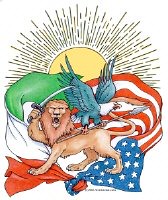
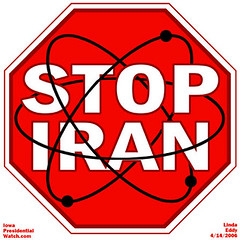

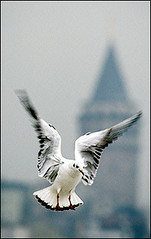



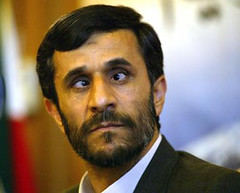



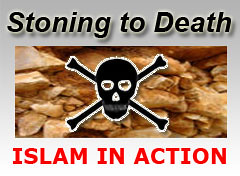

No comments:
Post a Comment